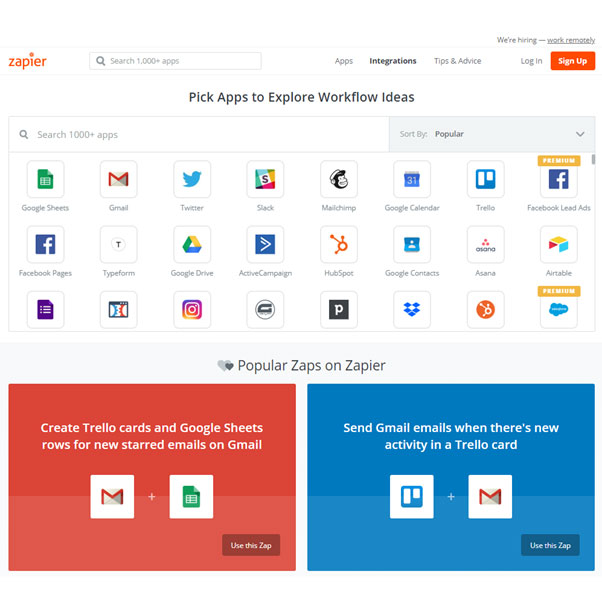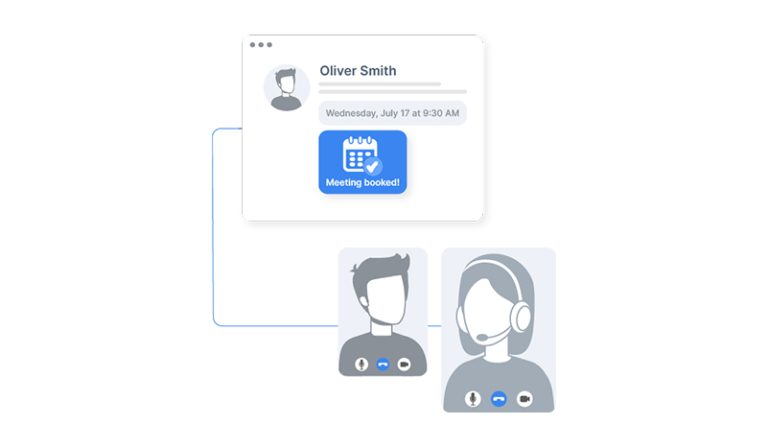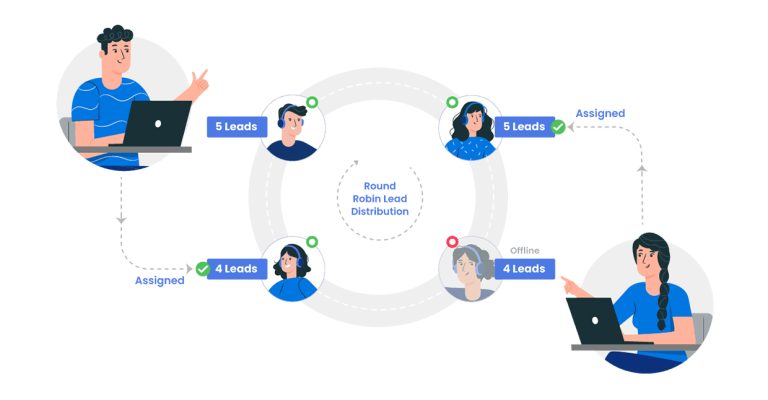What Is Inbound Prospecting?
Inbound prospecting is a sales strategy that focuses on attracting potential customers to a business by creating valuable content and establishing a strong online presence. It is an effective way to generate leads and build relationships with potential customers without being intrusive or pushy.
The process of inbound prospecting begins by understanding the needs and preferences of the target audience, and creating content that addresses those needs. This content can take various forms such as blog posts, videos, infographics, webinars, and social media posts. By creating valuable content, businesses can establish themselves as thought leaders and industry experts, and gain the trust of potential customers.
Inbound prospecting is a more customer-centric approach to sales, where the focus is on providing value and building relationships, rather than simply selling products or services. By using inbound prospecting techniques, businesses can attract potential customers who are already interested in their offerings, and are more likely to convert into paying customers.
In summary, inbound prospecting is a powerful sales strategy that can help businesses attract and convert potential customers by creating valuable content, establishing a strong online presence, and building relationships. It is an essential component of modern sales and marketing, and can help businesses stay ahead of the competition in today’s digital age.

What Is Inbound Prospecting?
The reason why you need inbound prospecting in your sales process
What is your ICP
3 ways to understand your ideal customer profile
Understand your ICP for effective prospecting
How to create an ICP
Creating a Target Account List
3 different types of content to attract your ICP
1. Informational articles
2. Case studies
3. Infographics
The reason why you need inbound prospecting in your sales process
Inbound prospecting allows businesses to target the right audience by understanding their ideal customer profile (ICP), which is a detailed description of the ideal customer for a business. By understanding their ICP, businesses can create content and marketing messages that speak directly to their target audience, leading to higher engagement rates and conversion rates. In addition, inbound prospecting enables businesses to build relationships with potential customers over time by providing them with relevant and valuable information, which helps establish trust and credibility.
By focusing on inbound prospecting, businesses can create a more efficient and effective sales process, where they can spend more time on qualified leads and less time on unqualified leads. This leads to a higher return on investment (ROI) and a shorter sales cycle. Inbound prospecting is also more cost-effective than traditional outbound sales techniques like cold calling or direct mail, as it is based on creating valuable content that attracts potential customers, rather than interrupting them with sales pitches.
In summary, inbound prospecting is a crucial component of the modern sales process, as it allows businesses to target the right audience, build relationships with potential customers, and create a more efficient and effective sales process. By investing in inbound prospecting, businesses can stay ahead of the competition and achieve their sales goals in a cost-effective and customer-centric manner.

What is your ICP
An ICP is a detailed description of the characteristics of your target audience, including their demographics, psychographics, pain points, and motivations. By understanding your ICP, you can create content and marketing messages that are tailored to the specific needs and preferences of your target audience.
Creating an ICP requires research and analysis of your existing customers and target market. This may involve conducting surveys, analyzing customer data, and conducting market research to gain a deeper understanding of your target audience. Once you have a clear picture of your ICP, you can use this information to create targeted content and messaging that speaks directly to your target audience.
Understanding your ICP is essential for effective inbound prospecting, as it allows you to attract and engage potential customers who are more likely to convert into paying customers. By creating content that addresses the specific pain points and motivations of your target audience, you can establish yourself as a thought leader and industry expert, which can help build trust and credibility with potential customers.
In summary, understanding your ideal customer profile is a critical component of inbound prospecting, as it enables businesses to create targeted content and marketing messages that speak directly to their target audience. By investing in understanding your ICP, businesses can attract and engage potential customers who are more likely to convert into paying customers, which can lead to higher conversion rates, customer loyalty, and revenue growth.
3 ways to understand your ideal customer profile
1. Understand your ICP for effective prospecting
Content marketing is a crucial component of inbound prospecting, as it allows businesses to attract potential customers by providing them with valuable information and insights that address their specific pain points and needs.
Creating valuable content requires an understanding of your target audience and their preferences. By analyzing your ideal customer profile (ICP), you can gain insights into the topics and formats that resonate with your target audience. This can include blog posts, videos, social media posts, infographics, webinars, and more.
In addition to creating valuable content, businesses must also focus on optimizing their content for search engines. This involves using relevant keywords and phrases in your content and metadata to improve your search engine rankings and increase visibility to potential customers.
By investing in content marketing as part of their inbound prospecting strategy, businesses can establish themselves as thought leaders in their industry, build trust and credibility with potential customers, and drive traffic and engagement to their website. In addition, content marketing can help generate leads and nurture them over time, leading to higher conversion rates and customer retention.
In summary, content marketing is a critical component of inbound prospecting, as it allows businesses to attract and engage potential customers by providing them with valuable information and insights that address their specific needs and pain points. By creating optimized and valuable content, businesses can establish themselves as thought leaders in their industry and drive traffic and engagement to their website, leading to higher conversion rates and customer loyalty.

2. How to create an ICP
An ICP is a detailed description of the characteristics of your target audience, including their demographics, psychographics, pain points, and motivations. By understanding your ICP, you can create content and marketing messages that are tailored to the specific needs and preferences of your target audience.
To create an ICP, businesses must first conduct research and analysis of their existing customers and target market. This may involve conducting surveys, analyzing customer data, and conducting market research to gain a deeper understanding of their target audience. Businesses should focus on identifying common characteristics among their most valuable customers, including age, gender, location, job title, industry, pain points, motivations, and more.
Once the data has been collected and analyzed, businesses can use it to create a detailed ICP. The ICP should be specific and detailed, including information on the target audience’s goals, challenges, preferences, and behavior. It should also be continually updated and refined as new data becomes available.
Creating an ICP is a critical component of inbound prospecting, as it enables businesses to create targeted content and marketing messages that speak directly to their target audience. By investing in understanding their ICP, businesses can attract and engage potential customers who are more likely to convert into paying customers, leading to higher conversion rates, customer loyalty, and revenue growth.
3. Creating a Target Account List
Creating a target account list is an important aspect of inbound prospecting. This involves identifying the ideal companies that are most likely to benefit from a business’s products or services. By targeting the right accounts, businesses can increase their chances of generating qualified leads and closing more deals. To create a target account list, businesses should research and analyze their target market to understand their pain points and needs. This can be done through customer surveys, market research, and competitor analysis. Once the ideal customer profile is identified, businesses can then compile a list of target accounts that fit the criteria. The list should include relevant information such as company size, industry, and location. By focusing on the right accounts, businesses can save time and resources, while maximizing their inbound prospecting efforts.

3 different types of content to attract your ICP
1. Informational articles
Creating quality long-form content that creates brand authority and is essential for successful content marketing efforts. This will allow you to establish trust and credibility toward the industry that your ICP sits in, giving you the ability to engage your target audience by answering questions they may have.
This type of content educates consumers, addresses their pain points, and offers solutions, establishing the brand as a reliable resource. As these articles dive deeper into how their solution solves their ICP’s problems, this content provides a pillar to becoming an industry leader, being regarded of this title has a network effect that can strongly assist your inbound prospecting efforts.
Maintaining these long-form articles with a consistent brand voice, style, and messaging across different content channels is crucial for brand recognition and fostering a loyal following. Consistency reinforces the brand’s reliability and expertise, establishing its authority in the eyes of consumers.
The next step in addition to producing consistent long-form content is optimizing these articles for SEO, connecting your ICP from what phrase they are entering into Google, directly to these long-form articles you have produced.
Key takeaway here is, to understand that matching your ICP’s search term to enable your content to arise as a search result, usually results in very engagement rates toward your content. As you have matched the searches ‘Intent’, either educate your ICP or answer their questions about your solution.
Valuable content leads to higher search engine rankings, increased organic traffic, and improved brand visibility. Additionally, quality content has the potential to attract inbound links from reputable sources, further enhancing SEO performance.
2. Case studies
What is the importance of a case study? Well, nearly 90% of consumers read product reviews before they make a purchase, which means gathering and publishing social proof is a crucial activity for your SaaS company. Case studies are important because they provide confirmation to B2B buyers that your products and services will provide the intended value, based on experiences of other customers with similar needs. This is particularly relevant in the context of changing consumer behavior.
Case studies offer the benefit of portraying unique stories about individuals facing specific challenges and pursuing goals. It’s crucial to learn how to write a business case study that goes beyond a simple product review. To achieve this, delve deeply into the various aspects of how your team assists customers in implementing your software and possible future use cases of your customers.
This type of content gives your prospect thorough insight into what it’s like to use your products and work with your company. These past customer examples offer factual events of how a product or service has succeeded in practical situations. They offer comprehensive descriptions of how companies have conquered obstacles and reached their objectives by using the offerings of the sales team. This technique supported by evidence adds reliability and establishes confidence with prospective clients, allowing them to witness how others have benefited from the product or service.
Sales representatives can use this method to customize their sales pitches and presentations based on individual customer needs. By reviewing relevant case studies, sales professionals can recognize patterns and similarities between their potential customers’ difficulties and those encountered by previous clients. With this information, they can create personalized stories that showcase the distinctive benefits and solutions their products or services can offer.
3. Infographics
Infographics are highly beneficial for inbound prospecting, due to their ability to convey complex information in a visually appealing and easily digestible format. These graphical representations provide a concise overview of data, statistics, and key points, making it easier for sales professionals to communicate and engage with potential customers.
These types of graphics capture attention and deliver information quickly. In a fast-paced world where people are constantly bombarded with information, infographics stand out and grab the viewer’s attention. They present information in a visually compelling manner, utilizing colors, icons, and illustrations to convey messages effectively. This visual appeal helps sales teams break through the noise and capture the interest of potential customers.
Infographics simplify complex concepts. Inbound prospecting sales reps often deal with intricate product features, intricate processes, or technical specifications. Infographics condense this complexity into clear, concise visuals that can be understood at a glance. By simplifying information, infographics enable sales reps to explain complex ideas more effectively, leading to better comprehension and increased engagement from potential customers.
Finally, infographics enhance retention and recall. Studies have shown that people are more likely to remember information presented in a visual format than plain text. This becomes super important when inbound prospecting as you have a very short window to convey value to your prospects, hence assisting this process and reducing the number of objections that may arise. By incorporating infographics into sales presentations or marketing materials, sales teams can improve information retention and enhance the chances of customers recalling key details about the product or service.
Key learnings from inbound prospecting
In my opinion, adopting inbound prospecting is the future and involves a shift in mindset rather than completely changing channels or strategies. As far as I’m aware, most organizations already have the necessary strategies and tactics in place to embrace this approach. The only gap lies in their understanding of what success truly means and defining their purpose well in advance of implementing their campaigns. The key question is, How can you improve the integration of your inbound marketing initiatives with sales, ensuring a stronger connection to sales and business metrics?
Only one way to find out, meetings with prospects.










